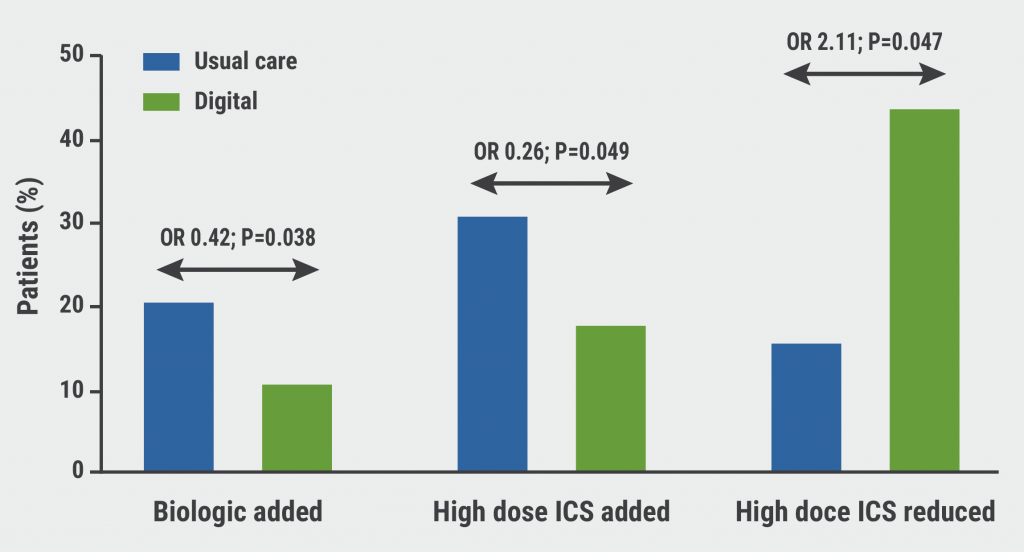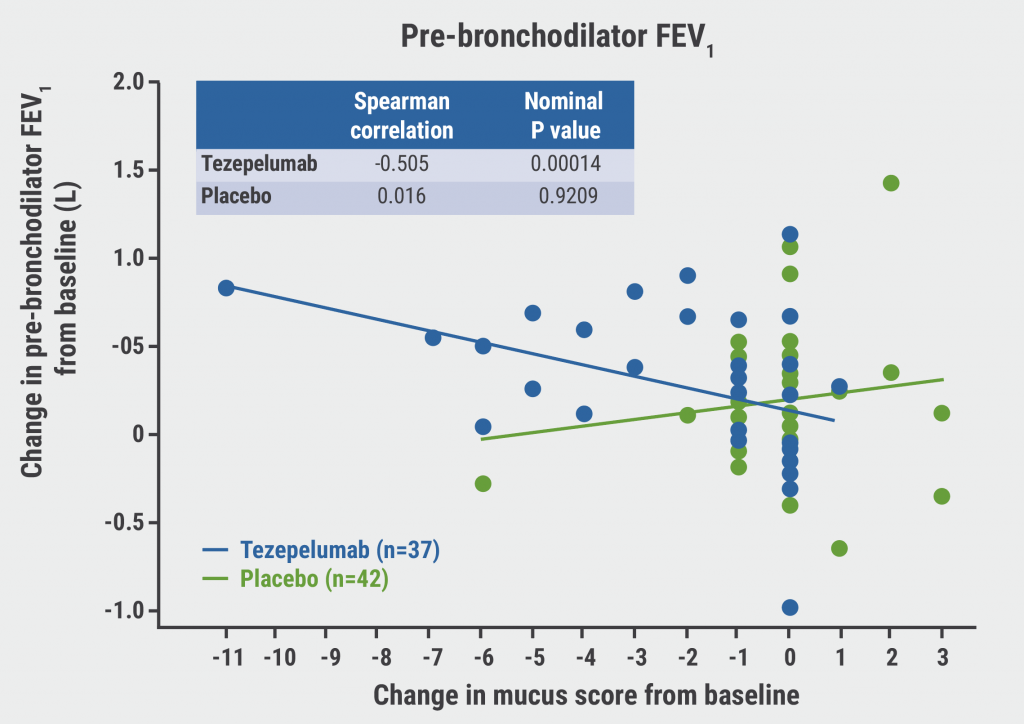https://doi.org/10.55788/291ee359
“Medical adherence, inhaler technique, and underlying comorbidities are practical challenges in the assessment of patients with asthma,” stated Prof. Richard Costello (Bon Secours Hospital Dublin, Ireland) [1]. Objective measures are needed to separate patients with difficult-to-treat asthma from those with severe asthma. The INCA-SUN trial (NCT02307669) randomised 216 patients with severe, uncontrolled asthma to the experimental arm, in which participants received personalised biofeedback on inhaler adherence, technique, and peak expiratory flow, with treatment decisions being informed by digital data, or to usual care.
At week 32, 11% of participants in the experimental group and 21% of the participants in the usual care arm required add-on biologic therapy (OR 0.42; P=0.038). In addition, participants in the usual care arm more often received added high doses of inhaled corticosteroids (ICS) compared with the experimental arm (OR 0.26; P=0.049). A reduction in high-dose ICS was more frequently reported in the digital arm than in the usual care arm (OR 2.11; P=0.047; see Figure).
Figure: Digitally-informed decisions lead to better outcomes [1]

OR, odds ratio.
The authors showed that adherence was approximately 10% higher in the digital arm than in the control arm. Importantly, asthma control rates, lung function, T2 inflammation, and exacerbation rates were comparable between the 2 study arms, indicating that the digital approach achieved asthma control more frequently by improving the current therapy instead of escalating therapy.
Finally, Prof. Costello said that the direct medical costs for 1 individual were €3,000 less in the digital arm than in the usual arm.
- Costello R, et al. Use of digital measurement of medication adherence and lung function to guide the management of uncontrolled asthma: The INCA Sun randomized clinical trial. ALERT 4, RCT4446, ERS International Congress 2022, Barcelona, Spain, 4–6 September.
Copyright ©2022 Medicom Medical Publishers
Posted on
Previous Article
« Mepolizumab beneficial for patients with severe eosinophilic asthma Next Article
Digital asthma intervention improves health and reduces costs »
« Mepolizumab beneficial for patients with severe eosinophilic asthma Next Article
Digital asthma intervention improves health and reduces costs »
Table of Contents: ERS 2022
Featured articles
Letter from the Editor
COVID-19: What Is New?
Does vilobelimab reduce mortality in severe COVID-19?
Awake proning not positive in COVID-19
Favipiravir may help patients over 60 years with COVID-19 to recover
Inhaled agent under investigation for COVID-19
Accurate voice-based COVID-19 diagnostic test in development
Novel scoring tool for post-COVID syndrome aids clinicians and researchers
COPD: Therapies and Innovations
Icenticaftor achieves results on top of triple inhalation therapy in COPD
STARR2: A new approach for treating COPD exacerbations
COPD medication not effective in symptomatic smokers with preserved spirometry
Do digital tools improve physical activity in COPD?
Hyperpolarised gas MRI ready for clinical use
All About Asthma
Tezepelumab in asthma: mucus plugging down, lung function up
Digital asthma intervention improves health and reduces costs
Digitally enhanced therapy lowers treatment burden and costs in severe asthma
Mepolizumab beneficial for patients with severe eosinophilic asthma
Progress in Paediatrics
Antibiotics cause increased risk of wheezing in severe RSV bronchiolitis
Inhaled corticosteroids useful in preterms with decreased lung function
Fish oil or vitamin D during pregnancy can prevent croup
Encouraging results of nintedanib in children with fibrosing ILD
Focus on Interventional Pulmonology
Head-to-head: lung volume reduction surgery vs endobronchial valves
Durable effect of endobronchial valves in severe emphysema
Cone beam CT-guided ENB improves detection of pulmonary nodules
Confirmatory mediastinoscopy not needed in resectable NSCLC
Sleep and Breathing Disorders
In the spotlight: Cancer trends in obstructive sleep apnoea
Impact of CPAP on cardiac endpoints in OSA
Sustained hypoxaemia predicts unprovoked VTE in OSA
CPAP therapy in the prevention of cardiovascular risk in patients with OSA
Other Remarkable Research
Excellent results for high-flow nasal cannula oxygen therapy in acute respiratory failure
Antifibrotic therapy may slow down FVC decline in RAILD
Intravenous N-acetylcysteine performs well in hospitalised patients
Men and women respond differently to diesel exhaust
New trends in cystic lung diseases
Related Articles

October 30, 2022
Tezepelumab in asthma: mucus plugging down, lung function up
January 25, 2023
Top 14 Medical Innovations for 2022
© 2024 Medicom Medical Publishers. All rights reserved. Terms and Conditions | Privacy Policy
HEAD OFFICE
Laarderhoogtweg 25
1101 EB Amsterdam
The Netherlands
T: +31 85 4012 560
E: publishers@medicom-publishers.com

